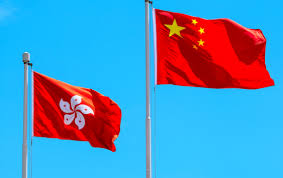Attention U.S. Exporters to Hong Kong: Have you Reviewed Your Export Licenses and Trade Compliance Program to Account for Recent Changes?

Jessica Sanderson, Partner at The Volkov Law Group, rejoins us for a posting on recent changes to export regulations involving Hong Kong. Jessica can be reached at [email protected].
Until recently, the U.S. government treated Hong Kong and China as two separate destinations for export control purposes and in many cases provided Hong Kong with preferential treatment. At the end of 2020, however, on December 23, 2020, the U.S. Bureau of Industry and Security (“BIS”) published two final rules in the Federal Register changing the regulations associated with the export and reexport of items controlled under the Export Administration Regulations (“EAR”) to and from Hong Kong.
One Final Rule removed Hong Kong as a separate destination under the EAR, meaning that Hong Kong is now treated the same as mainland China for export and other trade-related purposes. Export license requirements for Hong Kong are now governed by the Commerce Country Chart entry for China. See Supplement No. 1 to 15 CFR Part 738; 85 FR 83765. Hong Kong, as part of China, now falls within Country Group D (see Supplement No. 1 to Part 740) and is subject to national security, chemical and biological, missile technology and arms embargo restrictions in the EAR. Hong Kong also was removed from the list of Computer Tier 1 countries and is now part of Computer Tier 3 (with China).
Among other things, exporters must now obtain licenses for the export, re-export or transfer to Hong Kong of any item or technology for which a license was/is required for China, even if such item or technology previously could be exported to Hong Kong without a license (“NLR” or No License Required). The Final Rule contained a “Savings Clause,” authorizing shipments of items as NLR to Hong Kong through January 22, 2021, but only if such items were on dock for loading or en route to Hong Kong on December 23, 2020. That date is quickly approaching.

The second Final Rule created a new Military End User (“MEU”) List, naming more than 100 Chinese and Russian companies subject to certain enhanced licensing requirements. See Supplement No. 7 to 15 CFR Part 744. A few important things to note about the MEU List: (1) the list is not-exhaustive, (2) BIS will undoubtedly add names to the list (and even reserved a place to add entities in Venezuela), and (3) the BIS MEU List is a separate list from the U.S. Department of Defense’s list of Chinese Communist military companies (“DoD List”), but inclusion on the DoD List is a red flag that requires additional due diligence. Accordingly, companies must continue to conduct due diligence on non-listed companies in China, Russia, or Venezuela to determine whether the non-listed company meets the definition of a “military end user,” or the contemplated activity constitutes a “military end use.”
Below are a few changes of particular relevance to many of our clients:
15 CFR §742.4(b)(1)(ii) provides that “items classified under 9×515 or ‘600 series’ ECCNs will be reviewed consistent with United States arms embargo policies in §126.1 of the ITAR.” “9×515,” collectively refers to dual use spacecraft, satellite technologies and related items previously controlled under the ITAR that are now found in the Commerce Control List (“CCL”) under ECCNs 9A515, 9B515, 9D515 and 9E515. “600 series” refers to ECCNs in the “xY6zz” format on the CCL that were previously controlled under the International Traffic in Arms Regulations (“ITAR”) or are covered by the Wassenaar Arrangement Munitions List. Essentially, this walks back some of the export control reform changes that moved many items from the USML to the CCL (i.e, from ITAR/military controls to EAR/dual use controls). In practice, that means more license applications may be denied. See 15 CFR §742.4(b)(7)(i) (for China – now including Hong Kong – “all [license] applications will be reviewed to determine the risk of diversion to a military end user or military end use,” and many export items are now subject to a policy of denial under 22 CFR § 126.1); see also 15 CFR § 742.6(b)(1)(i) (“When destined to China …, items classified under … any 9×515 ECCN will be subject to a policy of denial.”)

Finally, the Electronic Export Information (“EEI”) filing requirement for China (requiring EEI filings for all CCL items to China) will now apply to Hong Kong, even if the destination filed in EEI is separately listed as Hong Kong.
Exporters of items or technology to Hong Kong should carefully review their export licenses and trade compliance program to ensure compliance with the new regulations. As always, The Volkov Law Group is happy to assist with those efforts.














